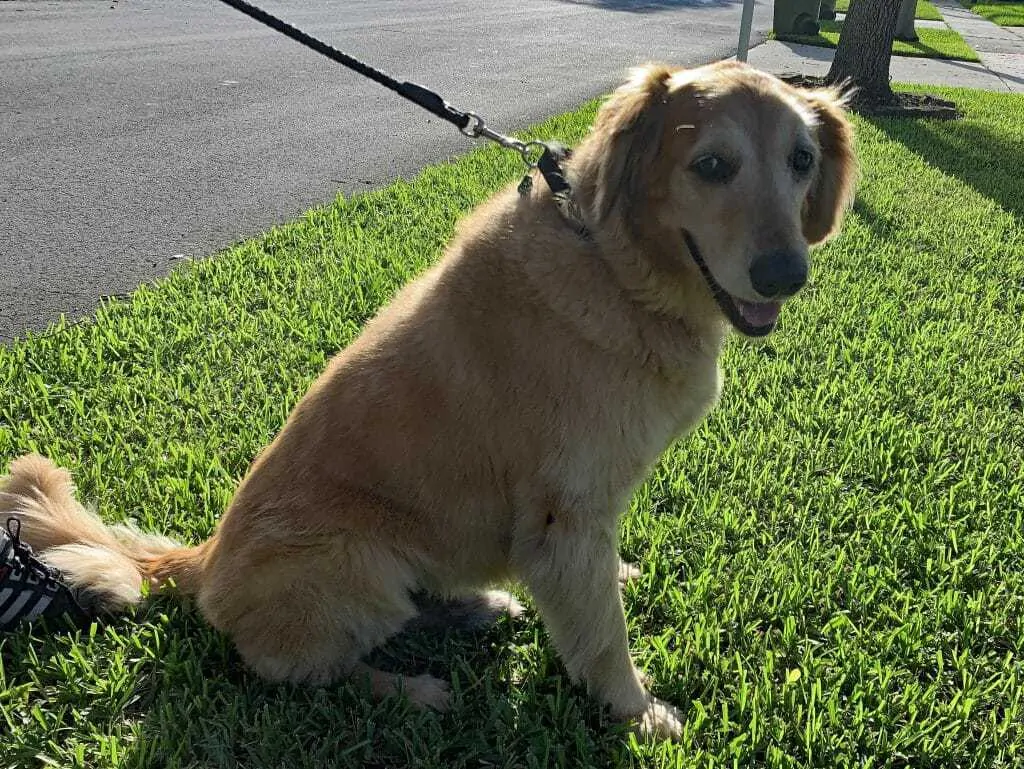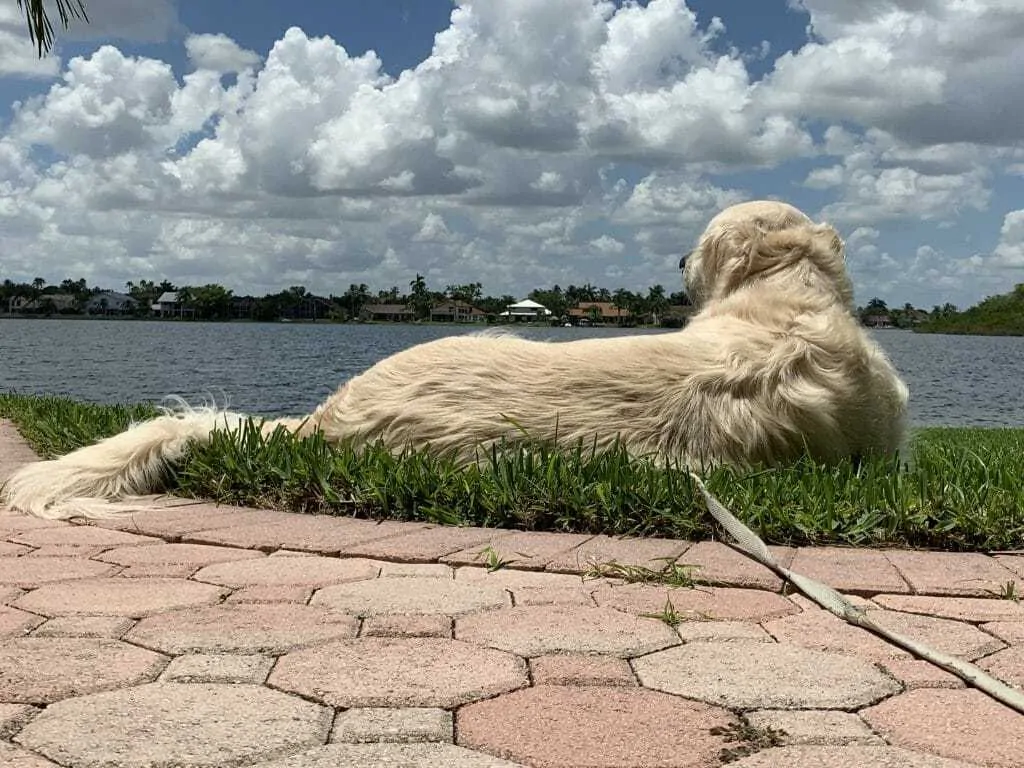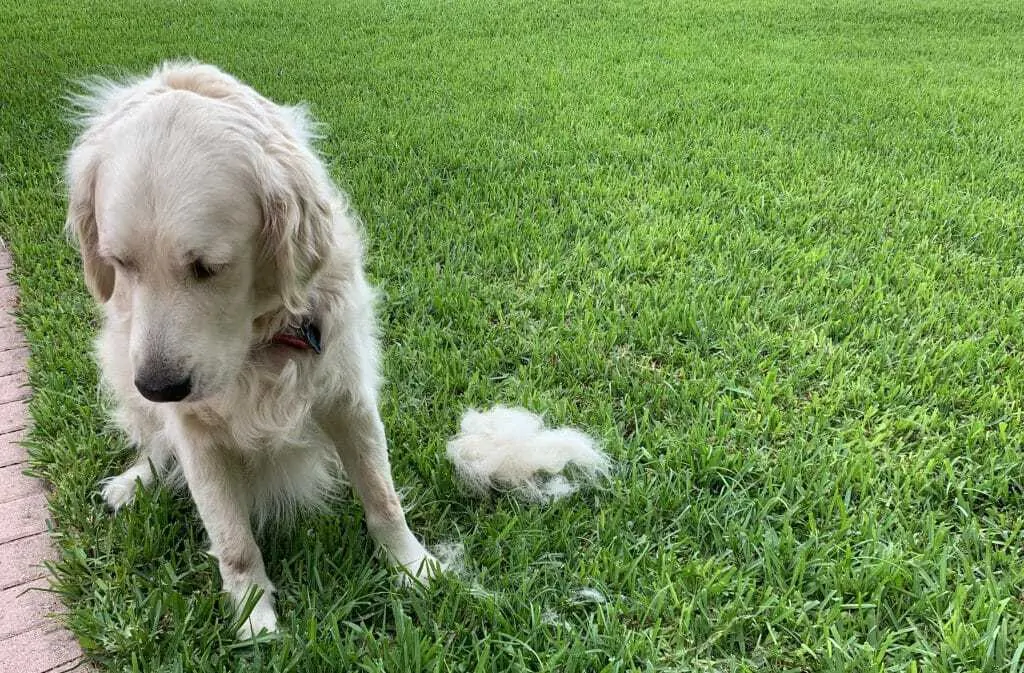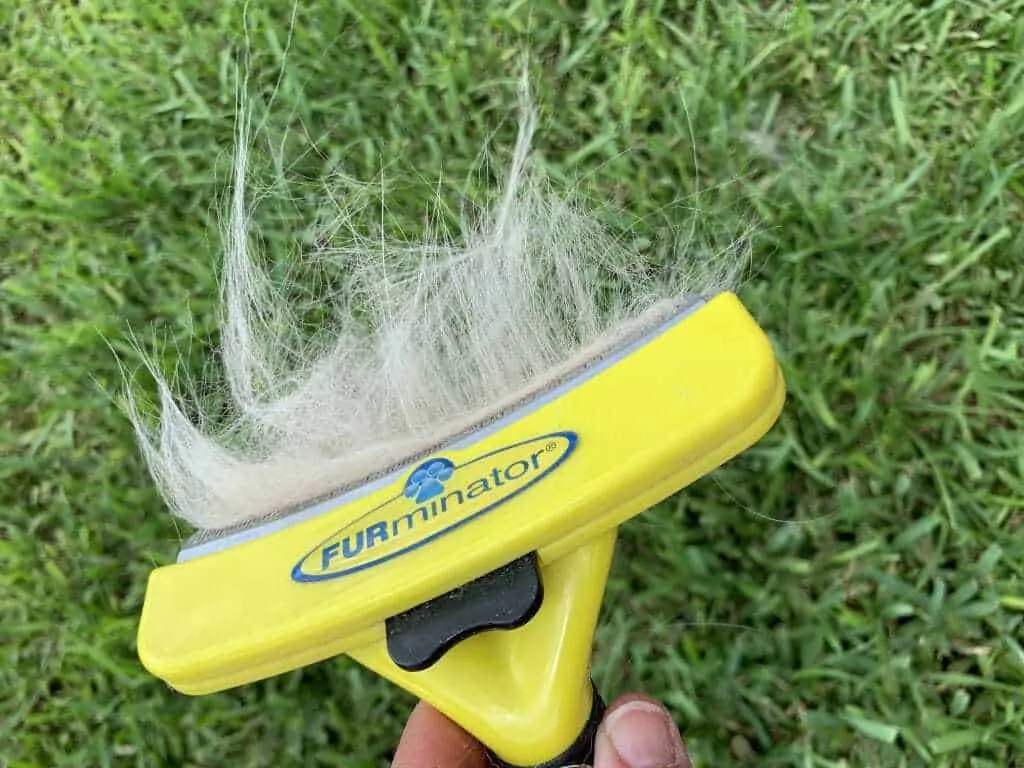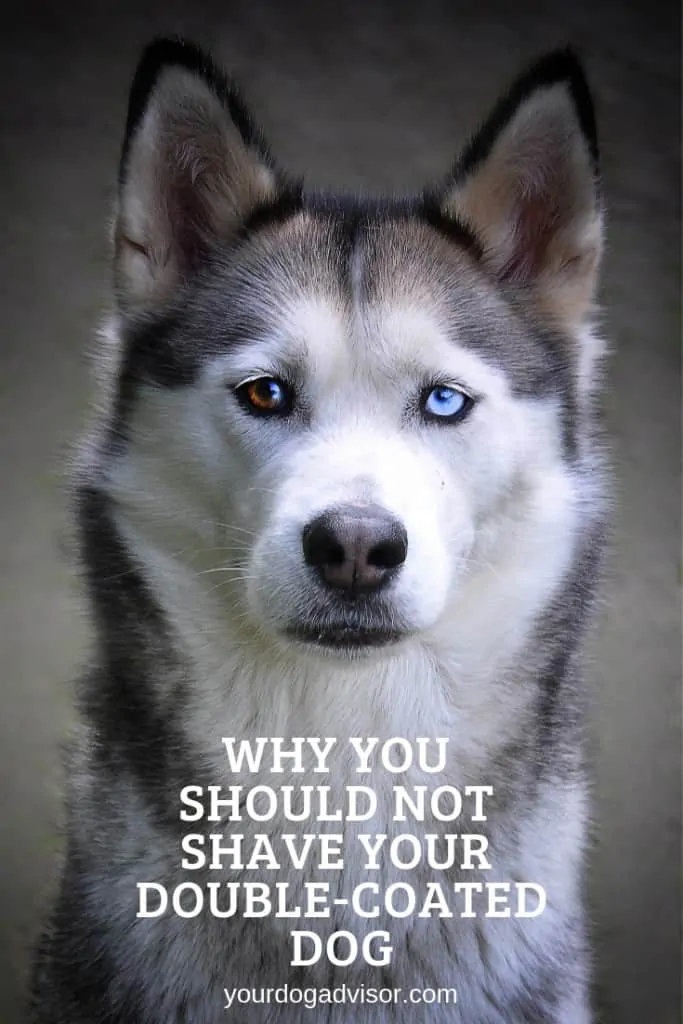Summers in South Florida can be unbearably hot. Temperatures soar into the 90s on most days and the humidity, don’t get me started on that. And I know I am not alone. Many of my friends from around the country are struggling to beat the heat this time of the year.
If it’s hot for us humans, imagine just how hot it can be for our furry, four-legged friends! It’s no wonder I see so many people running to their local groomer to give their dogs (and sometimes cats) a summer cut. My neighbor’s Golden Retriever, Astor, gets shaved down once a year, as does my other neighbor’s Husky. While shaving might be OK for poodles, it is not a good idea if you have a dog with a double-coat.
Astor gets shaved once a year.
Contents
What is a Double-Coat
As its name suggests, a double coat is made of two layers: A dense and soft undercoat of short hairs which often have a wooly texture. The more dense this undercoat is, the fluffier is looks. The top coat is longer and coarser. The undercoat is designed to keep dogs warm in the winter and cool in the summer. The top coat, known as guard hairs, prevent water from getting to the undercoat.
While most dogs shed year-round, many double-coated dogs will “blow” their coats – switching from a winter to a summer coat, a seasonal process that, while important for new growth, can result in a real mess around the house. During this “blow” process, the undercoat will come out in large clumps often leaving your dog looking a bit ragged and your living room looking like your dog may have exploded. Dogs that live in climate-controlled homes may not experience as much of a “blow” as those that live or spend a great deal of time outdoors, such as sled dogs. However, as anyone with a double-coated dog will tell you, there is still plenty of fur flying.
Which Dogs Have Double Coats
Most double-coated dogs were bred to be outside, no matter the weather, and they come in all shapes and sizes. You may be surprised which dogs are double-coated. Even if you know nothing about dogs, you probably would guess that the Alaskan and Siberian Husky, the Chow Chow, the Old English Sheepdog and the Golden Retriever are double-coated. But there are many shorter-hair breeds that also have a double coat including the Beagle, the Welsh Corgi and the Parson Russel Terrier, to name a few.
Why You Should Not Shave Your Double-Coated Dog
It’s tempting to want to shave your dog, particularly in the hot summer months. Others think shaving their dog will cut down on problems if you have allergies. That is a misconception. Allergies are not triggered by fur, but instead by dander, saliva or a pet’s skin. Shaving your dog not only won’t help, it might even exacerbate your allergies.
When I was much younger and got my first Golden Retriever, Cassie, I would shave her once a year. Not only did I think it would make her more comfortable, but I also thought it would help to cut down on those fur tumbleweeds. She was the first, and only Golden Retriever I ever had shaved and here’s why. In the summer your double-coated dog will shed the undercoat, leaving the guard hairs to protect and insulate your pooch.
If you shave your dog, you are taking away that top layer of protection. You might also notice that shaving a dog can change the texture of its coat. Some have described it as being like Velcro and you will find that things like grass, burrs (or stickers) and other things will stick to your dog’s coat.
Dogs with double coats also tend to have more sensitive skin, so they are more prone to getting sunburned. Shaving can damage their skin resulting in razor burn, which not only can be painful, but may take a while to heal.
Even on hot summer days Koda enjoys laying out in the sun. His undercoat and long hair protect him from the heat and those pesky mosquitoes.
What are Your Options?
Brush, brush, brush. Grooming your dog year-round with a good brush is essential to a healthy coat. It will also keep your dog from getting matted. There are a number of grooming tools available that are made specifically for double-coated dogs. I have tried a number of them and for my purposes I find a pin brush is good for removing dead or loose guard hairs, especially around their bottom.
Jake enjoys being de-furred. As you can see a lot comes off.
I also use the FURminator to remove the undercoat. The teeth of the FURminator are very close together and can be harsh on the skin so don’t press down too hard. A good brushing will help with the natural shedding process and keep your dog from becoming matted.
No products found.
The FURminator helps to eliminate the undercoat as well as the guard hairs.
Often double-coated dogs end to smell more, so regular bathing is essential. I generally brush out my English Cream Goldens a few times a week, give them a bath with a shed-reducing shampoo every few weeks, and then brush them out again using a blow dryer. This not only dries them and keeps them from having that “wet dog” smell, but it also helps to remove excess fur. While many dogs are fearful of the vacuum cleaner, mine actually like it and will line up to be vacuumed. This can help reduce the amount of longer guard hairs that tend to litter my floor.
Other Ways to Keep Your Dog Cool and Comfortable
Savannah, one of my Golden Retrievers, enjoyed floating around in our pool.
You don’t need to spend a lot of money on gadgets to keep your dog cool. You can let them join the family and take a dip in the pool. It’s best to make sure your dogs are trained in how to get in and out safely from the time they are puppies, in the event they accidentally fall in. Never leave your dog out by the pool unattended, or make sure you have a safety net around the pool. We no longer have a pool, but we do live on a lake. Though neither of my dogs has shown an interest in going in, I never leave it to chance and make sure they are never left unattended.
If you don’t have a built-in swimming pool, you can purchase a relatively inexpensive kiddie pool for your pooch. Jasonwell sells a foldable tub for dogs, cats or kids. It comes in small, medium, large, X-large and XXlarge.
No products found.
There are a number of other ways to help your dog keep cool.
Having a double-coated dog takes work. If you can’t invest the time and effort into taking care of their coat, you may want to consider other breeds with coats that don’t need as much attention.
